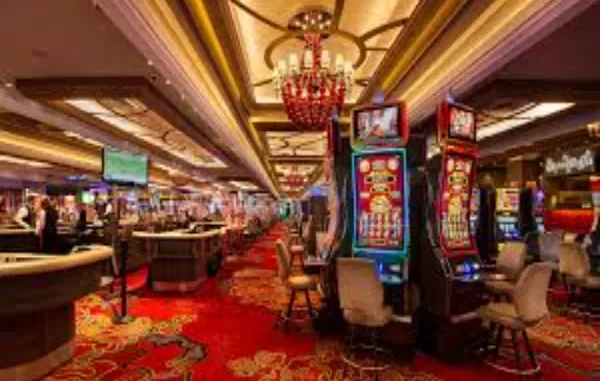
Professional poker players think differently about money than casino gamblers. They don’t chase losses, don’t bet their entire bankroll on favorable situations, and don’t let emotions dictate their decisions. After losing $2,000 in one terrible casino session, I decided to study how poker pros manage risk.
Here’s how I adapted poker risk management principles to casino gambling and why this framework protects my bankroll better than any other system I’ve tried.
Professional gaming organizations like Rabona Hungary understand the importance of strategic thinking, offering over 9,000 games from 125+ providers alongside comprehensive sports betting options, demonstrating how systematic approaches to entertainment and risk management create better long-term experiences.
The Expected Value Foundation
Poker players never make decisions based on hope—they calculate expected value (EV) for every action. Casino gambling should work the same way.
EV calculation basics: Every casino bet has a mathematical expectation. A $10 bet on banker in baccarat loses about 10.6 cents on average. A $10 bet on tie in baccarat loses about $1.44 on average. Understanding these expectations helps prioritize bets.
Positive vs. negative EV: Poker players only make +EV bets over time. In casinos, nearly all bets are -EV, but some are less negative than others. The goal becomes minimizing negative expectation rather than finding positive bets.
Time value considerations: EV calculations must include time. A $5 blackjack bet with 0.5% house edge loses 2.5 cents per hand. At 80 hands per hour, your expected loss is $2 hourly. This clarity helps budget entertainment costs accurately.
Variance vs. expectation: Poker players distinguish between short-term results and long-term expectations. Bad runs don’t change fundamental mathematics, and good runs don’t mean you’ve found positive-EV situations.
The Kelly Criterion Adaptation
Kelly Criterion determines optimal bet sizing based on your edge and bankroll. While casino games don’t offer edges, Kelly principles still apply to risk management.
Fractional Kelly for entertainment: Since casino games have negative expectations, I use fractional Kelly sizing to extend playing time. Never risk more than 1% of bankroll on any single bet, regardless of confidence level.
Bankroll segmentation: Poker players separate tournament buy-ins from cash game bankrolls. I separate casino gambling money from living expenses completely, treating it as entertainment budget with defined loss limits.
Bet sizing consistency: Kelly Criterion prevents overbetting strong hands in poker. Similarly, it prevents me from increasing casino bet sizes when winning or chasing losses with larger wagers.
Growth vs. survival: Poker players balance bankroll growth with survival probability. In casinos, I prioritize survival (extended playing time) over growth potential (chasing big wins).
The Position and Timing Concepts
Poker players understand that timing and situation affect decision quality. The same principles apply to casino gambling.
Game selection timing: Just as poker players choose games based on opponent skill and table dynamics, I choose casino games based on conditions. Crowded blackjack tables with slow dealers hurt my hourly EV compared to fast single-deck games.
Session timing decisions: Poker players quit losing sessions before their play deteriorates. I set time limits for casino sessions regardless of results, preventing emotional decision-making when tired or frustrated.
Advantage situation recognition: Poker players maximize value when they have edges. In casinos, I look for the best rules, highest RTP games, and optimal betting conditions within my chosen games.
When developing strategic approaches to timing and risk, exploring resources like the aviator crash game can help understand how proper timing and risk assessment apply across different gaming scenarios.
The Emotional Control Framework
Poker success requires emotional discipline that directly translates to casino gambling.
Tilt recognition: Poker players identify when emotions affect decision-making. I track my emotional state during casino sessions and take breaks when frustration or excitement cloud judgment.
Result independence: Good poker players make correct decisions regardless of recent outcomes. I follow optimal casino strategy whether I’m winning or losing, avoiding the temptation to change systems based on short-term results.
Bankroll protection: Poker players never risk their entire bankroll on one tournament or cash session. I never bring more than 10% of my gambling bankroll to any single casino session.
Objective analysis: Poker players review hands objectively after sessions. I analyze casino sessions focusing on decision quality rather than results, identifying strategic improvements regardless of whether I won or lost.
The Information Advantage Pursuit
Poker players constantly seek information edges. Casino players can apply similar principles.
Game rule optimization: Just as poker players study opponent tendencies, I research casino game rules to find the best available conditions. The difference between 3:2 and 6:5 blackjack is substantial over time.
Comp system maximization: Poker players understand pot odds and implied odds. I calculate the true value of casino comp systems, ensuring I receive maximum benefit from my theoretical losses.
Promotion evaluation: Poker players analyze tournament structures for overlay opportunities. I evaluate casino promotions mathematically rather than emotionally, only participating when the numbers justify the action.
Variance preparation: Poker players maintain bankrolls sized for game volatility. I adjust casino bankroll requirements based on game variance, keeping larger reserves for high-volatility slots than low-volatility table games.
The Implementation Results
Applying poker risk management to casino gambling produced measurable improvements:
Extended playing time: Better bankroll management and bet sizing allow longer sessions within the same budget.
Reduced variance: Systematic approach smooths results and eliminates the extreme swings that previously characterized my casino play.
Improved decision-making: Emotional discipline and EV thinking prevent costly mistakes during both winning and losing streaks.
Better game selection: Understanding mathematical differences between games led to choosing better options and avoiding terrible bets.
The Long-Term Benefits
Poker-inspired risk management transformed casino gambling from emotional entertainment to calculated recreation. I still enjoy the games, but I enjoy them longer and lose less money while doing so.
The key insight: treating casino gambling with the same analytical rigor that poker players apply to their game doesn’t reduce fun—it enhances it by eliminating the stress and regret that come with poor risk management.
Leave a Reply